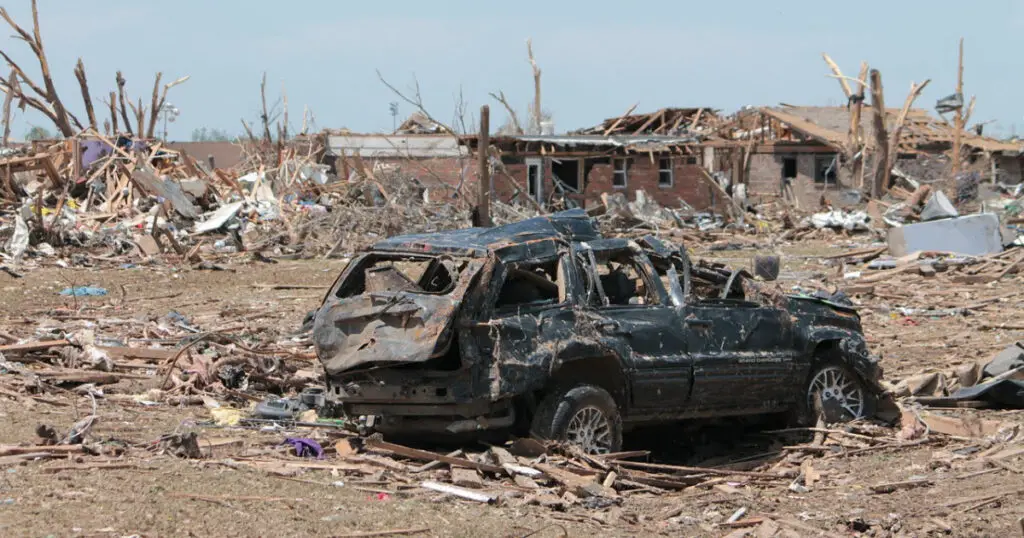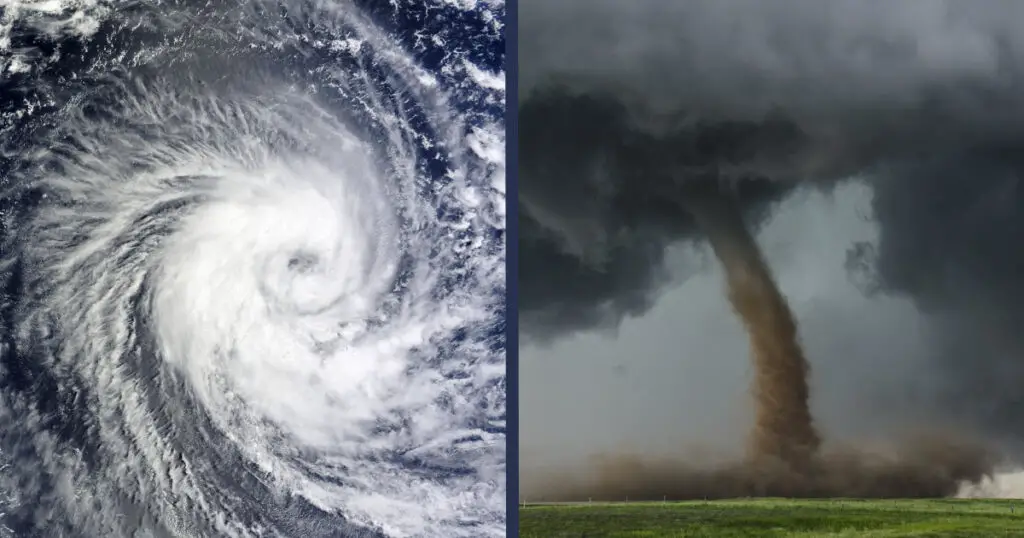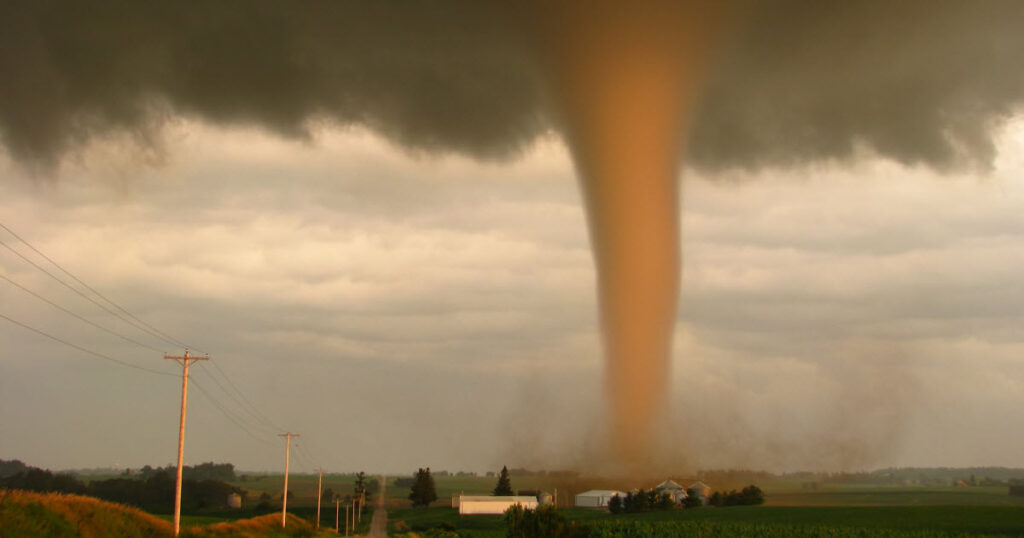Tornadoes are vertical funnels of violent winds. These winds can exceed 250 miles an hour and a tornado can occupy a path as wide as 50 miles. Tornadoes are arguably one of Nature’s most vicious weapons, capable of wiping out entire neighborhoods. Here are some interesting tornado facts to help you learn more about these startling and lethal forces of nature.
An Introduction to Tornadoes
More colloquially known as twisters, tornadoes emerge out of thunderstorms and often come with heavy rain or hail. Huge, relentless thunderstorms called supercells spark the most devastating tornadoes.
These natural disasters occur in many parts of the globe, but the United States is a region particularly prone to frequent tornadoes. For example, “Tornado Alley” refers to a stretch of states across the middle of the US, including South Dakota, Nebraska, Missouri, Kansas, Oklahoma, Texas, and Colorado. This region sees more annual tornadoes than anywhere else in the world.
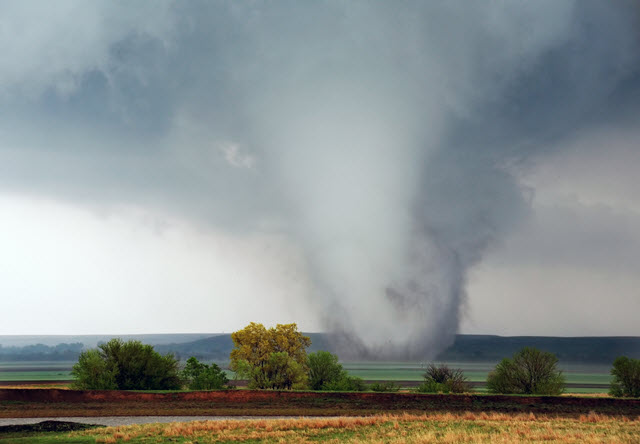
Now let’s look at some interesting tornado facts broken into the following groups or categories:
- Tornado Formation
- Tornado Characteristics
- How Tornadoes Move
- Tornado Destruction
- Tornado Forecasting
- How Tornadoes End
- Record-Breaking Tornado Facts
Let’s dive right in!
Facts About How Tornadoes Form
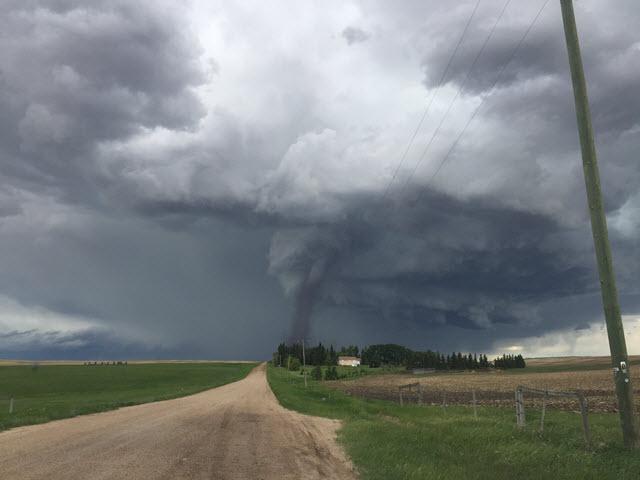
- While tornados can occur in any season, and at any time of day or night. They tend to occur most frequently in the late afternoon and during the months of spring. This is because the sun heats the ground enough to precipitate thunderstorms.
- Tornadoes are caused by erratic winds going in different directions and at different speeds. These rapid concurrent winds create a spinning motion within the storm cell. The classic funnel shaped cloud of a tornado forms by the spinning air that rushes up to meet the rotating air rushing down.
- Usually, these winds mix in conditions where warm, humid air collides with cooler, dry air. When these different air types meet, it results in an unstable atmosphere, which in turn causes wind to stir into a frenzy.
- The most destructive tornadoes emerge from existing thunderstorms, which already have violent winds brewing. Roughly one in a thousand storms will cause a tornado.
- Tornadoes are so recurrent in “Tornado Alley” due to the moist, warm air from the Gulf of Mexico uniting with the cold, dry Canadian air. This provides the perfect climactic condition for tornadoes to form.
- Water droplets from the moist air in the wind forms a funnel cloud. The funnel expands and grows, and after some time, it descends from the cloud. When it reaches the ground, it becomes a tornado.
Tornado Facts: Characteristics
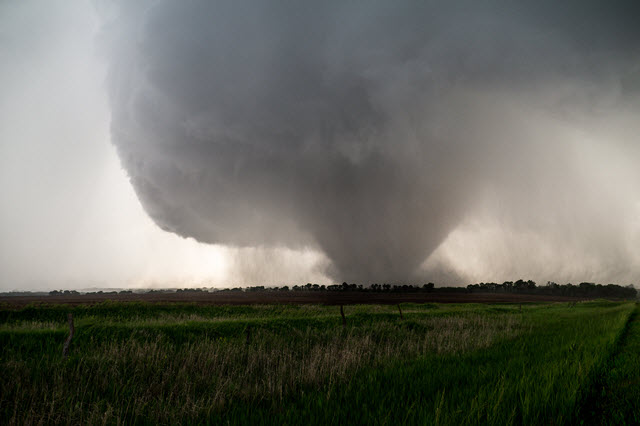
- Twisters often come hand in hand with extreme thunderstorms and fierce winds. Additionally, hail commonly occurs in conjunction with tornadoes.
- Once a tornado reaches the ground, it can last for anywhere between a few seconds and three whole hours.
- The average twister has a width of around 660 feet and can move at roughly 30 miles an hour. Most tornadoes don’t travel for more than six miles before ceasing.
- Enormous tornadoes, however—the ones that wipe out whole neighborhoods—can reach speeds of up to 300 miles an hour.
- The Fujita scale is the original form of measurement that was used to calculate the strength of tornadoes. The units ranged from F0 to F5. The unit given was calculated by assessing the damage left behind. Nowadays, however, meteorologists use what’s called the Enhanced Fujita Scale (EFS) for greater accuracy.
Tornado Movement Facts
- Tornadoes can emerge from any direction.
- The majority of tornadoes travel from southwest to northeast. However, some tornadoes have also been recorded moving from west to east.
- Tornadoes are known to change direction suddenly, and even retreat back on the same path. This usually occurs when the bottom of the twister is met with winds coming from the thunderstorm’s core.
Tornado Destruction Facts
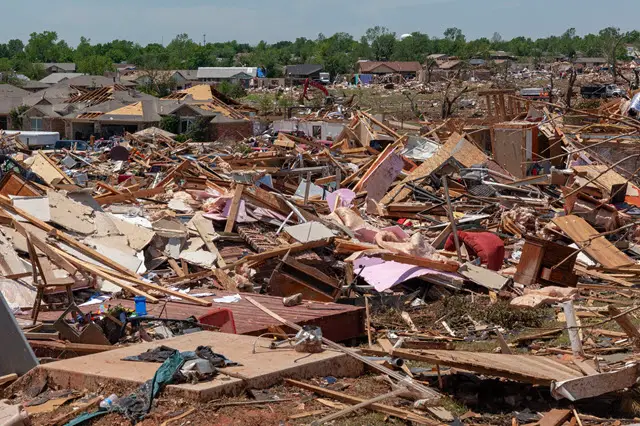
- Tornadoes cause around 400 million dollars of damage and kill an average of 70 people annually in the United States. Powerful winds can rip apart homes and public buildings, bridges, flip-over trains, cause cars to fly up in the air, and empty whole riverbeds.
- The strong winds can kill or injure people by forcing them to roll long distances along the ground, or by dropping them from great heights. However, most victims are harmed by flying debris, or by getting stuck under displaced rubble.
- Recorded deaths have gone down in recent years due to more advanced forecasting and warning procedures.
| Related Posts |
|---|
Facts About Tornado Forecasting
- Meteorologists at the U.S. National Weather Service use Doppler radar, satellites, weather balloons, and computer modelling to observe the sky for any signs of tornado activity.
- Doppler radars can record wind speeds and identify the beginnings of any rotation in thunderstorms. Doppler radar has increased the warning time for tornadoes from less than five minutes in the 1980s to around 13 minutes in the late 2000s.
- When meteorological conditions are indicative of tornado formation, the National Weather Service calls for a tornado watch. When a tornado has been sighted or indicated on radar, a tornado warning is issued.
- During tornado season, scientists and meteorologists study storms by placing sensors in the tornado’s path. These sensors measure wind speed, barometric pressure, and temperature.
- The biggest challenge tornado researches face is getting to the site of a tornado in time. Each morning, they monitor weather conditions and go to the region that seems most likely to suffer a tornado. However, they can often travel through many severe storms before finding a tornado.
How do Tornadoes Stop?
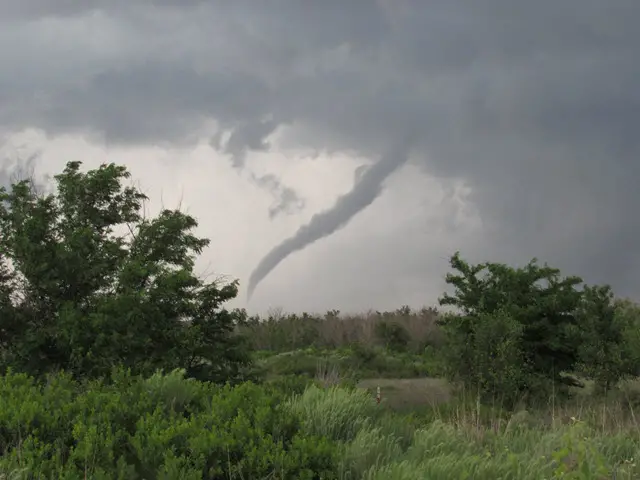
- In order to keep going, tornadoes require climatic instability, such as erratic heat and moisture levels, and a large degree of vorticity (rotation). Interrupting the instability or vorticity can halt a tornado in its tracks.
- One way this can be done is through the tornado encountering a cold outflow, such as the flow of wind coming out of a rain shower or thunderstorm. However, confusingly, this mix with outflow air can also cause a tornado to strengthen and become more destructive.
Tornado Facts About the Largest and Most Dangerous Storms
It’s no secret that tornadoes can be extremely destructive. Here are some mind-bending figures about the most devastating tornadoes ever recorded.
What Tornado Had the Widest Path?
On May 31, 2013, the sinister El Reno Tornado raged a course of destruction 16 miles long through central Oklahoma. Retrospective analysis estimates that this multi-vortex tornado spread out 2.6 miles wide as it crossed south El Reno — that equates to a width exceeding 45 football fields, making it a record-breaking tornado path width!
What Tornado Had the Highest Powered Winds?
On May 3, 1999, a devastating twister embarked across parts of Oklahoma City. This tornado was measured at F4/F5 on the EFS scale, which is nearly the highest destruction rating a tornado can have. It killed 36 people and injured many more.
A meteorologist found that wind speeds reached a record of 318 mph and was over 100 feet above the ground at various points.
Of course, we have not been able to record tornadoes for very long, so it’s highly possible that a tornado at some point in history exceeded this wind speed. This is the fastest spinning tornado we know about.
What’s the Record for Most Tornadoes in One Day or Single Outbreak?
April 26-28, 2011 saw a record breaking number of tornadoes occur in a single outbreak. In this “Super Outbreak”, at least 349 tornadoes traversed 21 states over the course of 3 days.
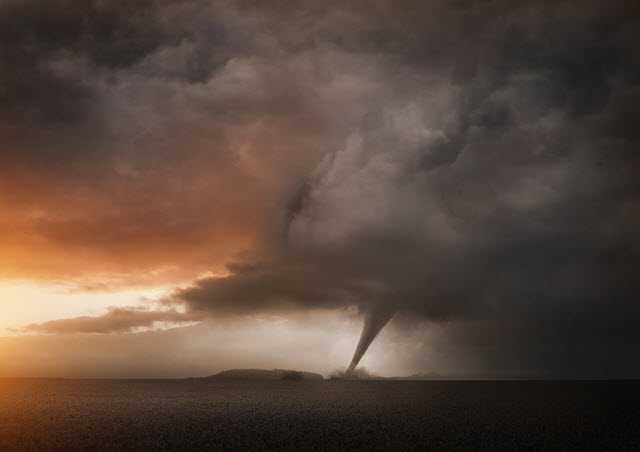
April 27 was the most calamitous day, with four of the day’s 200 tornadoes received a EF5 rating, the highest possible rating. The outbreak stretched across towns in Alabama, Mississippi, Georgia, and Tennessee.
The death toll reached 324 people and an additional 2775 people reported injuries.
What’s the Record for Most Tornadoes in a Month?
In April 2011, meteorologists recorded a total of 758 tornadoes (of which 349 occurred in the April 26-28 Super Outbreak). This easily exceeded the previous record of 542 tornadoes occurring in the month of May in 2003.
Beyond the “Super Outbreak”, which accounted for 39 percent of the total tornadoes that same month, there were a number of other high profile outbreaks in the Midwest and the South, including tornadoes which dramatically affected the St. Louis and Raleigh regions.
What’s the Record for Most Tornadoes in a Single Year?
2004 saw the record for the highest annual number of tornados, with 1817 twisters confirmed.
The month of May contributed to a large portion of that number, seeing 509 tornados – approximately double the 30 per year average for the same month.
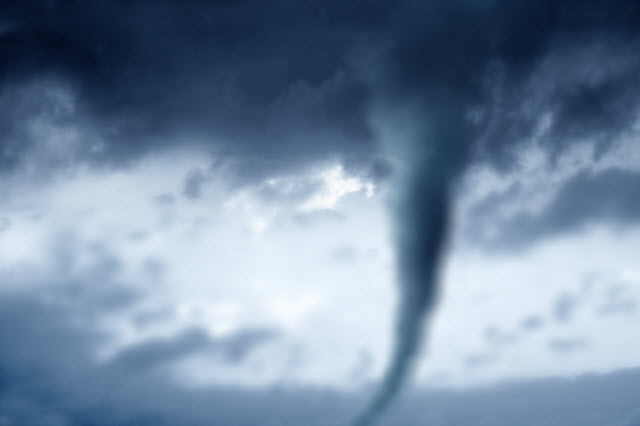
Tropical storms and hurricanes spurred on a number tornadoes that year. This led to unusually high numbers in August and September, each seeing 179 and 297 tornadoes respectively.
Which Hurricane Caused the Most Tornadoes?
While hurricanes and tornadoes have differences, they can occur in tandem. In September 2004, the devastating Hurricane Ivan caused huge amounts of damage across the Florida and Alabama coasts. However, it precipitated even further destruction by causing flooding and tornadoes as a by-product.
In total, hurricane Ivan caused 118 tornadoes across Florida and into Pennsylvania. This is the highest number of tornadoes resulting from a hurricane, ever.
What’s the Record for the Most Tornadoes in a State?
Number 3’s “Super Outbreak” also takes the crown for being responsible for the most tornadoes to occur in a single state. On April 27, 2011, Tennessee saw 72 tornadoes rage across the state. It also went on to cause 62 twisters in Alabama.
What Was the Most Financially Devastating Tornado?
Totalling $2.8 billion, the Joplin, Missouri tornado of May 22, 2011 is to date the most expensive tornado of all time.
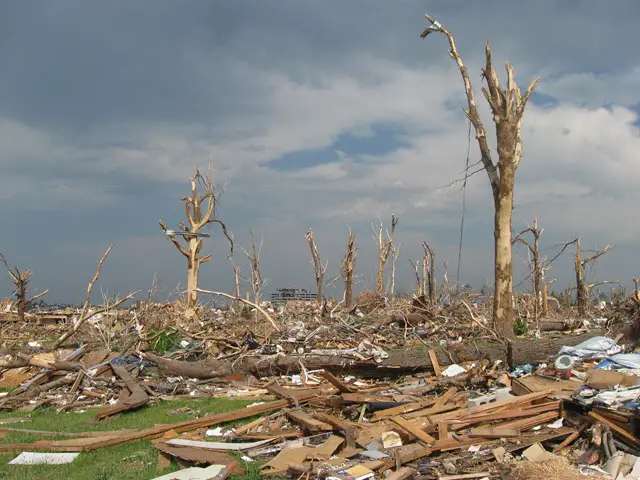
This EF5 tornado had winds exceeding 200 miles per hour and had a width of nearly one whole mile. It claimed 158 lives and destroyed nearly 7000 homes. The economic impact of this tornado continues today.
What’s the Longest Tornado Path Ever?
The Tri-State Tornado of March 18, 1925 was the most fatal and destructive tornado ever recorded. It paved a path 219 miles long from southeast Missouri, across to southern Illinois, to southwest Indiana.
However, the Tri-State tornado is still being retrospectively studied and many experts claim it was in fact an outbreak of several tornadoes. If this is the case, then this historically significant tornado may not in fact have had the longest tornado track, especially when compared to the December 2021 quad-state tornado.
What is the Most Lethal Tornado on Record?
As mentioned above, the Tri-State tornado is the deadliest and most devastating tornado in US history. A total of 695 people died across three states. In the small town of Murphysboro, Illinois, 235 people died and countless more suffered injuries.
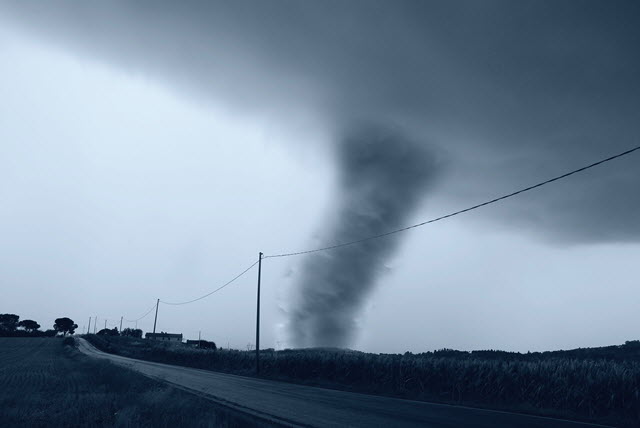
It traveled 235 miles across Missouri, Illinois, and Indiana, killing hundreds upon hundreds in its wake. This tornado was the deadliest tornado in United States history, and the second deadliest in the world.
What was the Fastest-Travelling Tornado Ever?
This record is harder to ascertain due to the fact that tornado speed is usually an estimate and cannot be confirmed. It is likely that the Tri-State Tornado of 1926 was the fastest-travelling tornado ever recorded with a speed of 73 miles per hour. However it is quite probable that other tornadoes have travelled faster than this.
Meteorologists claim that the fastest tornadoes tend to coincide with hurricanes, moving at 70-90 miles per hour.
RELATED: Tornado Facts for Kids

